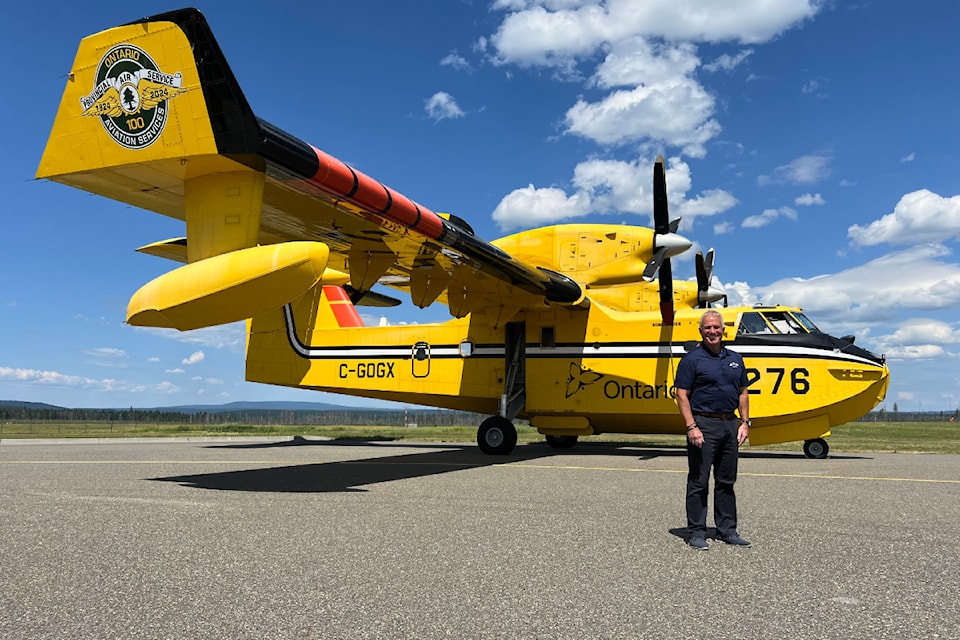Thanks to Ontario experiencing some wet weather, the central province is able to share some resources as B.C. braces for the possibility of more fires.
Two CL-415 Super Scoopers are ready to roll and on the runway at the Williams Lake Regional Airport in front of the Cariboo Fire Centre.
Each of the purpose-built firefighting airplanes is able to scoop about 6,000 litres in about 10-12 seconds from large bodies of water.
The planes arrived in Williams Lake on Saturday, July 13, thanks to resource-sharing between the provinces which allows for provinces to assist one another by sharing wildfire resources when not needed in their own province. The planes hopped from Sudbury, Ont. to Dryden, Ont. and then were in Kamloops for a night before making their way to their destination for the time being, Williams Lake.
Each plane came across with two pilots and an engineer.
Pilot Bert Roy has been flying the Super Scooper for 19 years and said he likes how manoeuvrable the plane is due to the short but wide wing design.
"It handles very nicely at low speed," explained Roy, noting the wing to power ratio is quite high, and the wing has a lot of camber, giving it more lift.
At home, each plane can scoop a load in a lake as small as a few 1,000 feet long, however, due to the higher elevations in our region, and the surrounding geography the planes will likely need to use longer lakes here than they would at home.
The body of the plane acts as a single pontoon when landing on water and one of the floats below each wing will also be used to balance the plane while it sits on the water.
Inside the airplane, an achor and rope are ready to be deployed from a nose hatch on the cockpit and a bilge pump is ready as well if needed.
"It's a flying boat," explained Roy.
He said the pilots themselves assess and determine where they can scoop and the opening for the intake of water is only about four inches by six inches.
This means the urban legends of birds, animals or even swimming people being picked up and dropped by scooping airplanes are just tall tales and not physically possible.
"You can't even pick up minnows, let alone a scuba diver," explained Roy.
Over the fire, the plane can drop the water from four "doors" on the tanks.
When releasing the water from the onboard tanks, pilots can open and drop the water at different rates determined by how many of the four doors they open, extending the area of coverage, depending on the type of forest fuels they are dropping on and the firefighting objectives. The plane also has the ability to inject foam into the water if wanted, which can help the water "stick" to the surfaces it drops on and last longer on the ground.
There are benches just inside the door and behind the cockpit which hold the foam tanks, but also provide seating and extra space for gear.
"You always have to travel with the intent that you may be deployed," said Roy.
The crews can go for 24-day deployments after which time the crews can be switched out with fresh personnel if the planes are still needed.



